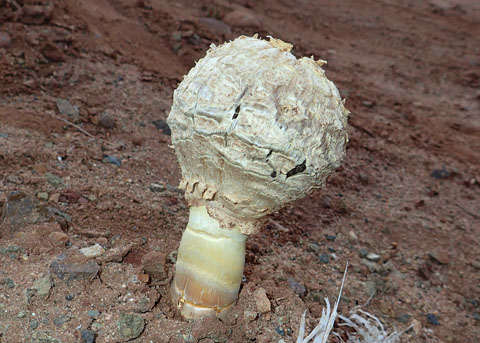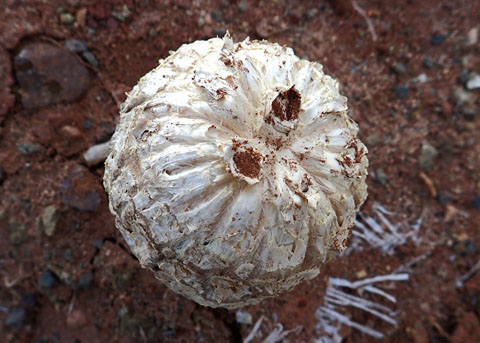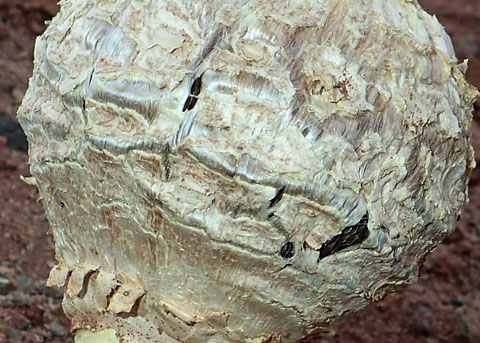 Edison Trail, Laguna Coast Wilderness Park, Laguna Beach, Orange County, CA. 11/15/2015. © Peter J. Bryant |
Gasteroid Agaricus Agaricus deserticola Family: Agaricaceae Back to Fungi of Orange County, California |
 Edison Trail, Laguna Coast Wilderness Park, Laguna Beach, Orange County, CA. 11/15/2015. © Peter J. Bryant |
 Edison Trail, Laguna Coast Wilderness Park, Laguna Beach, Orange County, CA. 11/15/2015. © Peter J. Bryant |
 Modjeska Canyon, Orange County, CA. 12-1-11. © Peter J. Bryant |
|
Found only in southwestern and western North America, A. deserticola is adapted for growth in dry or semi-arid habitats. The fruit bodies are secotioid, meaning the spores are not forcibly discharged, and the cap does not fully expand. Unlike other Agaricus species, A. deserticola does not develop true gills, but rather a convoluted and networked system of spore-producing tissue called a gleba. When the partial veil breaks or pulls away from the stem or the cap splits radially, the blackish-brown gleba is exposed, which allows the spores to be dispersed. The fruit bodies can reach heights of 18 cm (7.1 in) tall with caps that are up to 7.5 cm (3.0 in) wide. The tough woody stems are 1–2 cm (0.4–0.8 in) wide, thickening towards the base. Fruit bodies grow singly or scattered on the ground in fields, grasslands, or arid ecosystems. Source: "Agaricus deserticola"; Wikipedia, The Free Encyclopedia. Wikimedia Foundation, Inc. 2004. 3 December 2011. |
|
